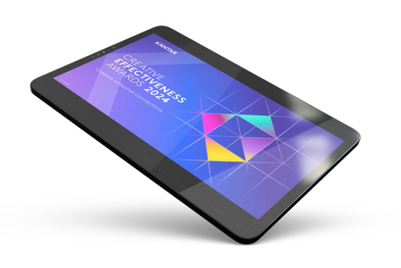Brands today are in search of ways to expand into newer markets and across borders. But marketing messages don’t transfer easily. Irene Joshy, regional head of creative, Kantar, speaking at
Spikes Asia 2019, said that in reality, only 40 percent of ads ‘travel well’ across the South East Asian region.
In her presentation, at Spikes Asia 2019, Joshy, who is a social anthropologist by qualification, spoke about how brands can identify and use cultural codes, archetypes and motifs across Asia.
Being a social anthropologist, one is acutely aware of the culture changes happening around, she said. So how do brands continue to stay relevant, transform and change?
“We know that a lot of effort, a lot of thought is going into creating and crafting a lot of the narratives that we see,” she said.
However, a large part of the advertising do not get the messaging right. “30% of the ads that we put out in the market actually end up underperforming and are an absolute waste. When you look at in terms of dollar value, you know how big that can be,” said Joshy.
However, she warns against paying too much heed to the naysayers. “The advertising business is going to grow. It's going to evolve into new and different formats. But it could have a different nature, it's going to have a different texture and fabric to it,” she says.
She adds that a lot of different experiments are happening and draws the attention of the delegates to the ad by Lexus – that was created using artificial intelligence, or P&G's brand Secret, which is actually turning inward, casting their own employees as brand ambassadors in the commercials.
Speaking about the difficulties of advertising messages travelling across markets, Joshy said, “it's not easy for ads to travel. When you create an ad for a particular market, it should essentially travel anywhere in the world.” But when research at Kantar looked at whether ads travel or not, there were only 40% ad transference within Asia, which means 60% of the ads do not travel well. “This means that they will not work beyond the market that you initially created an ad for,” she says. Globally, it comes down to about 52%, she adds.
“It's not just enough that you create a single minded story that you create a great ad or a narrative for a particular market. You also have to ensure that it travels well,” she said.
What helps agency and marketing personnel in this journey, is a very strong human insight. “A human insight needs to come out of a cultural orthodoxy.
If you're looking at a cultural orthodoxy, what does that essentially mean? It means that you're identifying a particular tension in a culture and could be human culture, and not necessarily the culture of a country, she clarified. “There will be certain orthodoxies that you need to take on and that's when you know you have a great insight.
When she was confronted with the question that what is the biggest cultural orthodoxy that a brand can take on in India, Joshy came up with a unique take.
“I gave it some thought. And the answer was divisiveness. Because when I look at India today, and I can say this confidently being an Indian, there seems to be more ‘thems’ than ‘us’ in India today. We always had the North Indian - South Indian divide, or that's an East Indian, that person belongs to some particular caste. “But today, even among the educated so-called elite, you tend to see a divisiveness coming to play,” she said. So when you're able to tap into it, and most importantly, after identifying whether it's solvable or not.
“Don't try and solve problems which consumers don't want solved. If you're able to do that, you will actually elevate your brand to iconic levels,” she said.
Three simple ways in which brands get stay relevant as cultiural changes take place, is to identify your brand archetype, define your purpose and the third, elevate the brand to a story. Coca-Cola’s Open Happiness campaign was one such case in point.
Archetypes are short cuts, she explained. “Our brains use the shortcuts all the time -- when you're watching an Hollywood film, or reading a fairy tale of your choice, they all have archetypes embedded in them,” said Joshy.
When your brand purpose gets linked to your archetype it becomes beautiful, she says and adds that in Coca-Cola’s case, it is about inspiring moments of positivism and happiness across. It's a very clear purpose for a friend. Think about how we have evolved as friends and how we have changed.
Yet, in keeping with the archetype and defining purpose, one to be about elevating and elevating.
All you need is your brand playbook? Identify the values and you will know intuitively what your brand stands for. Go ahead and then identify what is the purpose that you need. Espouse that and elevate the brand story. Next time you're looking at a creative brief, just see if it fits with your brand archetype. “It needs to be your second skin, it should come to you as naturally as breathing. Identify if you can build that purpose into your archetypal stories,” she said.
.jpg&h=570&w=855&q=100&v=20250320&c=1)
.jpg&h=570&w=855&q=100&v=20250320&c=1)




.jpg&h=334&w=500&q=100&v=20250320&c=1)
.jpg&h=334&w=500&q=100&v=20250320&c=1)



.jpg&h=334&w=500&q=100&v=20250320&c=1)
.png&h=334&w=500&q=100&v=20250320&c=1)

.jpg&h=268&w=401&q=100&v=20250320&c=1)

.jpg&h=268&w=401&q=100&v=20250320&c=1)
.png&h=268&w=401&q=100&v=20250320&c=1)



